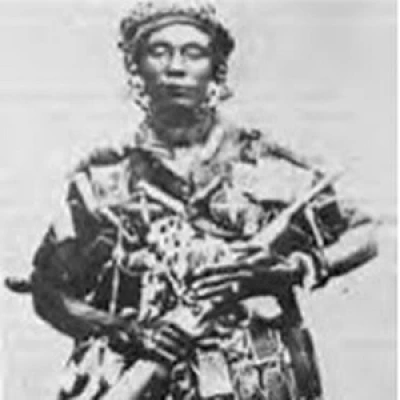The Controversial Emergency...
November 6, 2025

Yaa Asantewaa I, born in the mid-19th century, was an influential Queen Mother in the Ashanti Empire, located in present-day Ghana. Her legacy is deeply rooted in her role as a leader, politician, and warrior who fearlessly confronted British colonial rule in the early 20th century. This article explores the life, rebellion, and enduring legacy of Yaa Asantewaa.
Yaa Asantewaa was born in 1840 in Besease, Ghana, into the family of Kwaku Ampoma and Ata Po. Her upbringing was uneventful until her brother, Nana Akwasi Afrane Okpase, became the ruler of Edweso, a nearby community. Yaa Asantewaa, as the Queen Mother, took on the responsibility of protecting the Golden Stool, advising the King of Ashanti, and selecting candidates for the next king.
Yaa Asantewaa's pivotal moment came in 1896 when the British exiled her grandson, the King of Asante Prempeh I, and other Asante leaders to Seychelles. Facing the demand for the Golden Stool, Yaa Asantewaa rallied her people against British oppression, challenging the chiefs to resist colonization. In a dramatic gesture, she seized a gun and fired a shot, symbolizing her determination to go to war.
The conflict, known as the Yaa Asantewaa War of Independence or the War of the Golden Stool, began in March 1900. Yaa Asantewaa led an army of 5,000 Ashanti warriors, a remarkable and unprecedented role for a woman in Ashanti history. The rebellion laid siege to the British fort in Kumasi, resulting in significant casualties on both sides. Despite a valiant effort, Yaa Asantewaa and her advisors were eventually captured and exiled to Seychelles.
Yaa Asantewaa's legacy endures as a symbol of resistance against colonial oppression and an embodiment of female leadership in the face of adversity. Her call to arms challenged traditional gender roles, inspiring women to actively participate in the fight against the British. The rebellion marked the end of the Anglo-Asante wars, with the British annexing Ashanti territory in 1902.
Yaa Asantewaa died in exile in 1921, but her dream of Ashanti independence was realized on March 6, 1957, when Ghana gained independence as the first African nation in West Africa. Her significance is celebrated through various memorials, including the Yaa Asantewaa Museum, which unfortunately suffered a fire in 2004.
Yaa Asantewaa's influence extended beyond the battlefield. As a Queen Mother, she embodied the matriarchal structure of Ashanti society. Women played essential roles in legislative, judicial, and military processes, challenging traditional gender norms.
Yaa Asantewaa's legacy resonates through songs, memorials, and celebrations. She is celebrated in the song "Koo koo hin koo," immortalizing her achievements. The Yaa Asantewaa Girls' Secondary School was established in 1960 to encourage female leadership. Her impact is also recognized globally, with awards and honors bearing her name.
Yaa Asantewaa's life and rebellion against colonial rule exemplify courage, resilience, and a commitment to freedom. Her unwavering spirit, leadership, and contribution to Ashanti history and Ghana's independence make her an enduring symbol of strength and empowerment. The Yaa Asantewaa legacy continues to inspire generations and stands as a testament to the indomitable spirit of women in history.
November 6, 2025
November 5, 2025
November 4, 2025
October 31, 2025
October 30, 2025
October 30, 2025
October 30, 2025
September 25, 2025
September 12, 2025
September 11, 2025